Buying furniture is a huge investment. You want to ensure that you take time to research different things to make an informed purchase. This can help you have furniture for over five years with little to no maintenance required.
Here is what you need to know when buying furniture to save time, money and ensure that you buy comfortable furniture that suits the style of your home.
PS: Furniture here is sofas, chairs, tables and beds.
Table of Contents
Factors to Consider When Buying Furniture
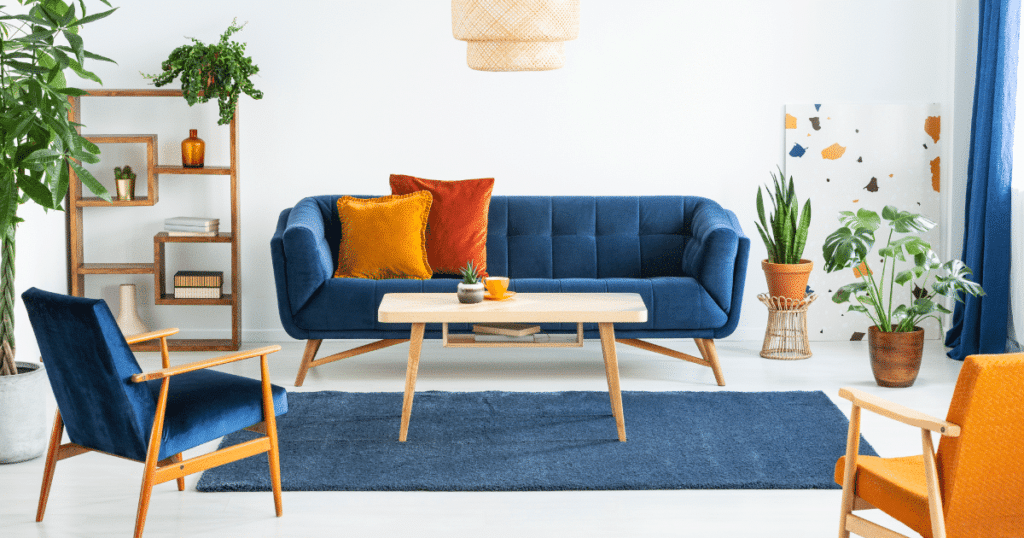
Each piece of furniture you add to your living space should be functional and suits your house design needs. Therefore, consider the following when buying each of these items.
Sofa: Think about your budget, the amount of space in your living room and the colour of the sofa.
Bed: Apart from providing comfort, beds are the focal point of your bedroom. The space in your room, size and style of the bed are all important. Do you want a bed just for you or will you be hosting guests?
Office Chair: While working from home, look for a chair that is comfortable with an adjustable seat, armrest and backrest.
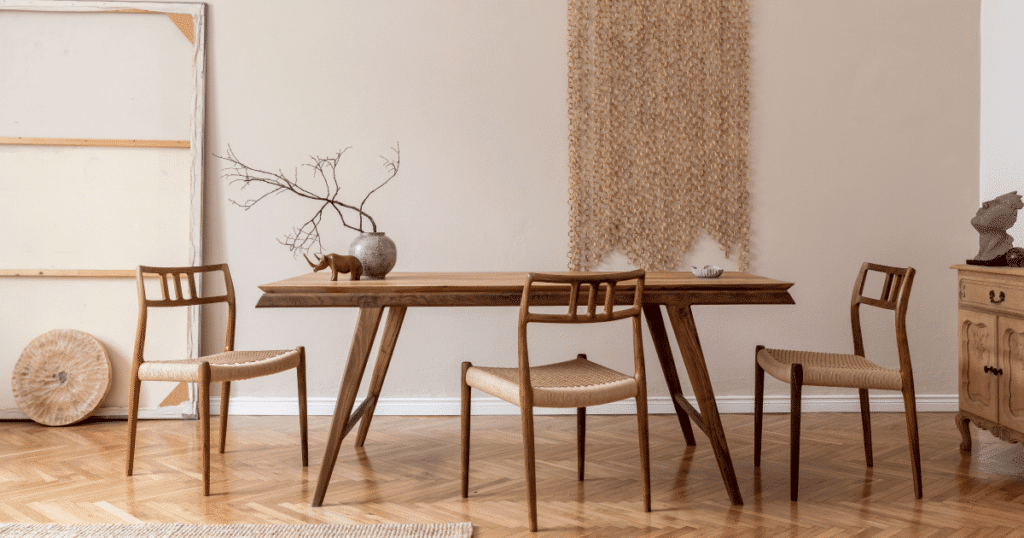
Dining Set: A dining set can be used to have meals with your family or you can use it as a workstation, especially now that most people are working from home. How will you want to use it? Do you have enough space for a dining set and a sofa set?
TV Stand and Entertainment Center: Think about the size, design and if you want to display items or hide them. Some TV stands act as a storage unit, so decide if this is something you are looking for. However, ensure that you buy one with enough room for your devices to breathe to avoid overheating.
Coffee Table: The material, size, shape and functionality are all important factors to consider. Do you want to use it only to place food when eating or to place your feet on when watching TV?
Tips on How to Buy Furniture
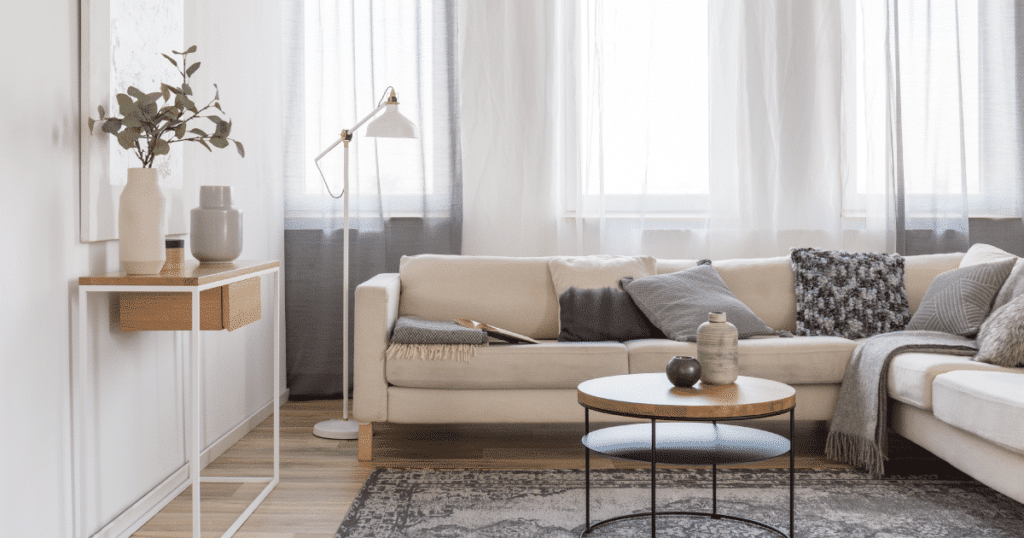
1. Get a Feel of Your House First
You could see something that you really love and decide to make an impulse purchase. Then once you get it delivered, you regret buying: buyer’s remorse. To avoid this from happening, get a feel of your house first if you just recently moved out.
You will start to understand where certain pieces should stay, what colours work best, what type of wall decor to install and what is the most important thing to buy first.
Pro Tip: Don’t buy all the furniture at a go – it’s expensive and some pieces might not go well together.
2. Research on Different Types of Wood
The type of wood you buy all depends on your budget. High quality wood is more expensive. For instance, solid wood that comes directly from the tree is more expensive than manufactured wood which has synthetic materials.
Whether you are making a custom made chair or buying from a shop, find out what wood options are available and ask about their durability. That is how you will understand why an item is expensive or not.
3. Explore Different Fabrics and Colours
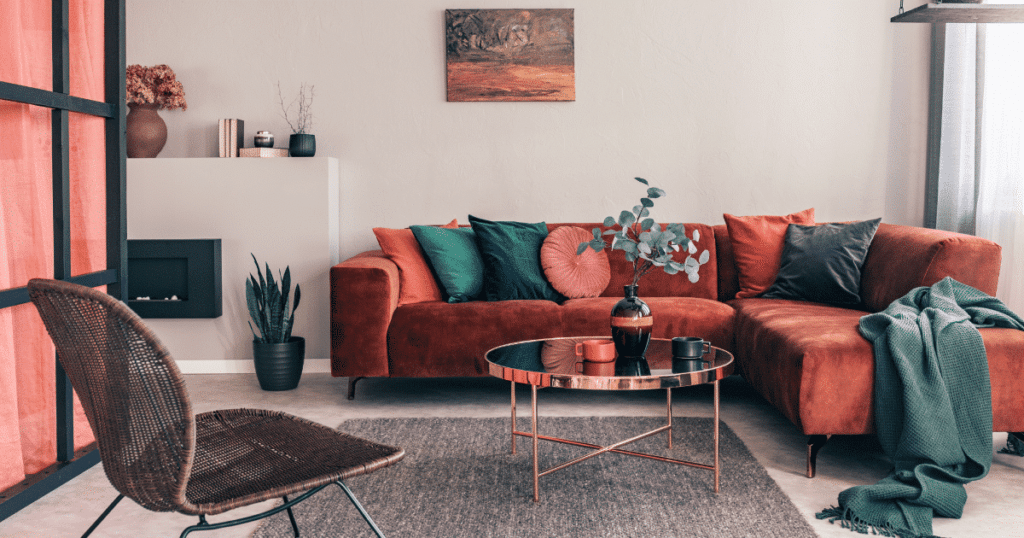
Your lifestyle will determine the type and colour of fabric you select. For instance, if you enjoy hosting people in your house, a dark shade will come in handy because it will be easier to clean in case of any spills from drinks or foodstuff.
When picking out a colour, you have to be very realistic. Say your favourite colour is yellow, you then decide to buy a yellow couch. Considering the fact that you will be looking at it daily, will you still love it a year from now or will the brightness annoy you?
Then there’s the other fact that after you get tired of that seat, you might want to sell it. How easy will it be to find someone who shares similar taste in colour?
4. Avoid Cluttering Your Space
If you live in a small space, it is easy to want to buy small furniture pieces. But the opposite is true. You would rather buy a few large pieces to make your house look less cluttered and busy.
Large furniture also creates an illusion that your house has more space than it actually does. Then once you put up wall hangings like mirrors, your house automatically looks bigger.
5. Don’t Overlook Used Furniture
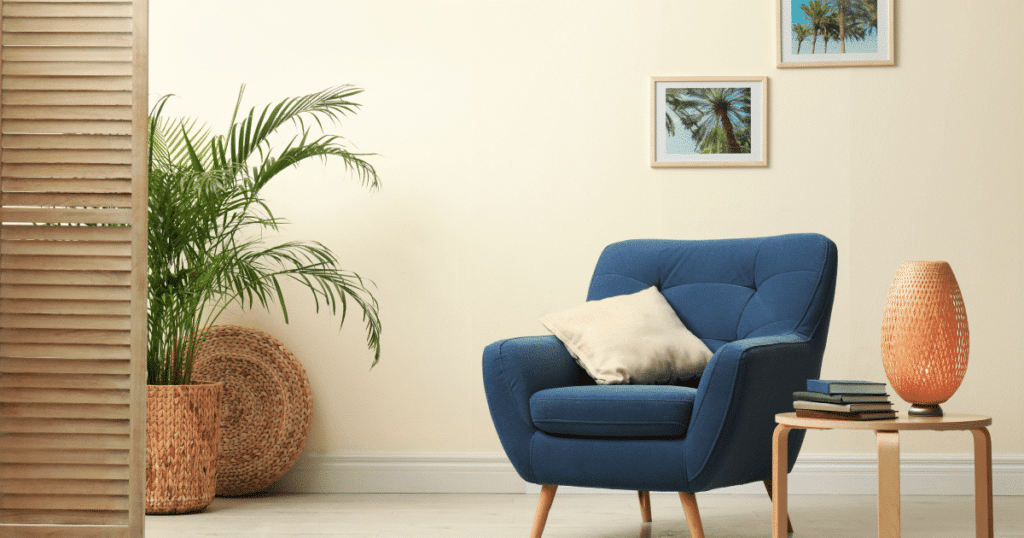
Buying used furniture has its own benefits: it’s cheaper and you can get something of great quality if you take the time to inspect it properly. Look for tears, stains and scratches. Most importantly, lift the cushions to check for any defects.
Another benefit of buying second-hand furniture is upholstering. You can change the fabric and add more cushioning to make it more comfortable. Remember to get furniture with a simple design because they are easier to fix.
6. Avoid “Too Good to Be True” Deals
Unless you are buying furniture from your family, a friend or a referral, avoid falling for scams that offer cheap furniture. It will cost you way more money to fix it than it would if you saved and bought from a reputable source.
It’s understandable to want to rush to buy something to fill a need. But you would rather take your time and do proper research before making a purchase you will end up regretting.
7. Think Long Term
If you’re living in a rented house, chances are you will want to move after some years. You want to buy furniture that will work in your current space and any other house once you move out.
For instance, buying an L shaped seat then moving to a smaller space might frustrate you to a point of selling if it doesn’t fit in the new house.
8. Don’t forget to negotiate
Don’t be afraid to negotiate for a lower price when you see something you like. Whether you are buying a new couch or getting it custom made, it doesn’t hurt to ask for a discount. Most times, sellers will reduce their prices.
And if that is not possible, try and negotiate to get some free pillows.
To Sum Things Up
When you’re buying furniture, always make sure you see the furniture before paying for it. Try out the comfort of the seat or bed, pay close attention to the fabric and look at the dimensions to see if it will fit in your space. It is hard to tell these things just by looking at a photo.



